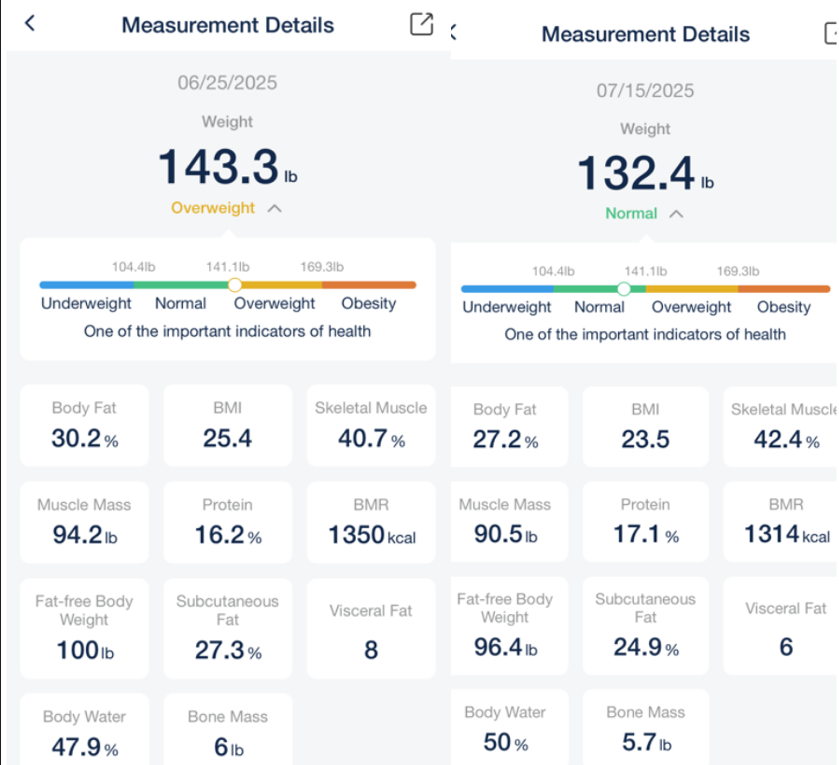Real Results: What to Look for Beyond the Scale in Our Weight Loss Program
- onyxdesignlab
- Jul 22
- 2 min read
Updated: Jul 30

When it comes to weight loss, most people focus only on the number on the scale. But true progress is about so much more than just pounds lost. At our clinic, we help you track the real results—internal markers that show your body is truly changing for the better. Let’s break down four key indicators that reveal what’s happening inside, and why they matter.
1. BMI (Body Mass Index): The Starting Point
BMI is a common measurement that compares your weight to your height to estimate body fat. It’s a simple tool used to categorize your weight status as underweight, normal, overweight, or obese.
Healthy BMI range:
For most adults, a BMI between 18.5 and 24.9 is considered healthy.
While BMI doesn’t tell the full story, it offers a general idea of where you stand and where you should aim to be. It’s especially helpful when used alongside the next few markers.
2. Body Fat Percentage: Why It Matters More Than You Think
Unlike BMI, which doesn’t differentiate between fat and muscle, body fat percentage measures exactly how much of your body is made up of fat.
Why it's important:
Too much body fat, especially around your belly, can increase your risk for diabetes, heart disease, and other health issues.
A healthy range varies by age and gender, but typically falls between 21-33% for women and 8-25% for men.
As you lose weight, your body fat percentage should decrease. This means you’re not just dropping water weight—you’re shedding unhealthy fat.

3. Skeletal Muscle: The Secret Weapon for Long-Term Success
Here’s something most people don’t talk about: the more skeletal muscle you have, the better. Skeletal muscle supports movement, posture, and metabolism.
Why more is better:
Muscle burns more calories at rest than fat does.
As you lose fat and strengthen your body, your skeletal muscle percentage should go up.
So if you're seeing this number rise—it’s a sign you're not just losing weight, you’re getting stronger.
4. Visceral Fat: The Dangerous Fat You Can’t See
Not all fat is created equal. Visceral fat is the fat stored deep in your abdomen, surrounding your internal organs.
Why it’s critical to monitor:
High visceral fat is directly linked to increased risk of stroke, heart attack, type 2 diabetes, and other serious conditions.
You may not always see this fat from the outside, but it silently increases your health risks.
Healthy range: A visceral fat rating of under 13 is ideal. As you improve your diet and exercise routine, this number should steadily drop—showing that you’re protecting your heart, liver, and overall well-being.
Final Thoughts
Our weight loss program goes beyond short-term fixes. It’s designed to support internal transformation, tracking meaningful health markers that reflect true progress. Whether you're just starting out or looking to fine-tune your routine, understanding these four areas—BMI, body fat, skeletal muscle, and visceral fat—can help you stay focused, motivated, and informed every step of the way.
Want to learn more or schedule a consultation? We’d love to help you start your journey to a healthier, stronger you.
Want more? Check out our previous blog on weight loss here.



Comments